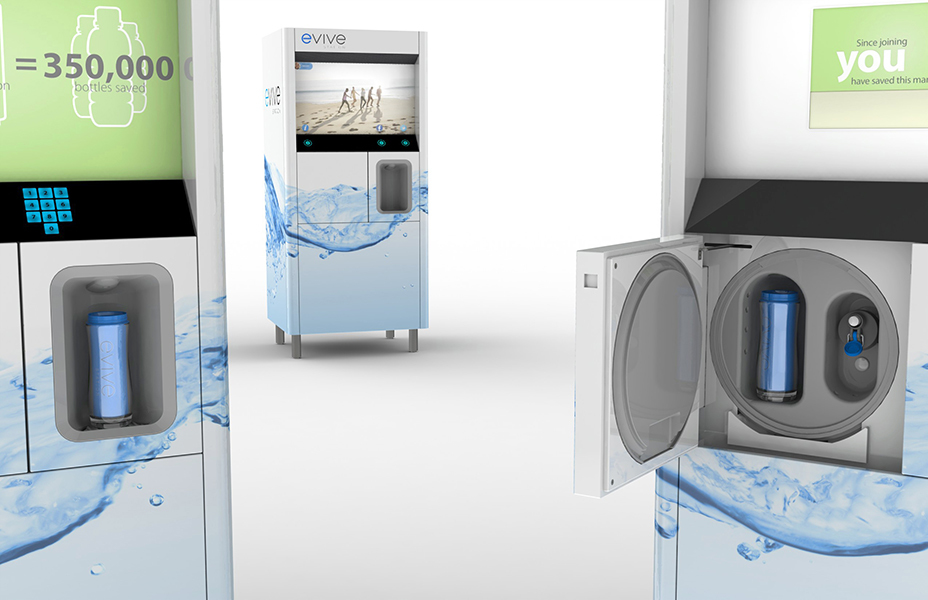
In 2006, around one million tons of plastic water bottles were produced in the U.S. - over 75% ended up in landfills. The numbers have only gone up since. Concerns about the resources to produce these bottles and the waste generated in their single-use and disposal have gained momentum, leading campuses, companies, and whole towns to ban the sale of bottled drinking water. Reusable water bottles have long been available, but aren't fully embraced; it's inconvenient to wash and refill bottles on the go.
Our client solved this by introducing a revolutionary kiosk that washes and sanitizes a specially designed bottle and then refills it with pure, filtered, refreshing water for free. The cost is paid by advertisers who provide targeted promotions to users. We were invited to help with the design of the bottle wash and fill station, which involved an impressive collaboration of many disciplines - mechanical, electrical, and software engineering, combined with industrial design, user interaction, and user interface design. This project was an interesting challenge, as it represented a complex system that was entirely new to the market. Our mechanical engineers developed and integrated the washing, sanitizing, and filtering components. Far more automation goes on inside than might be expected. A large number of components were identified, sourced, and integrated to satisfy the complex constraints of the system. As the development of each individual system progressed, changes to one often impacted the others. The station required a broad range of electronics to work in close harmony, including motor control, capacitive sensing, FPGA, control of higher-power components such as a pressure washer motor, and RFID. Getting the station to read the RFID tags embedded in a stainless steel bottle was an interesting technical problem. The bottles themselves acted as a Faraday cage and tweaking and testing were required to determine the best position of the tags within the bottles, as well as the best antenna design to ensure a reliable reading. Our industrial designers made sure that the station would be visually appealing on any college or company campus, while the interaction designers crafted the user experience at the machine and on the accompanying website to not only be visually engaging, but to also be emotionally engaging for those conscientious about the environment. Client-vendor interaction through weekly design review sessions provided an environment for the team to discuss and make changes quickly without sacrificing the timeline. Time-to-market goals were critical and challenging - by having all engineering responsibilities in-house, we were able to produce a strategy and execute it by leveraging our fluid delivery experience in the medical device industry. The result? The world's first individual bottle cleaning and filling kiosk – a product that users enjoy.